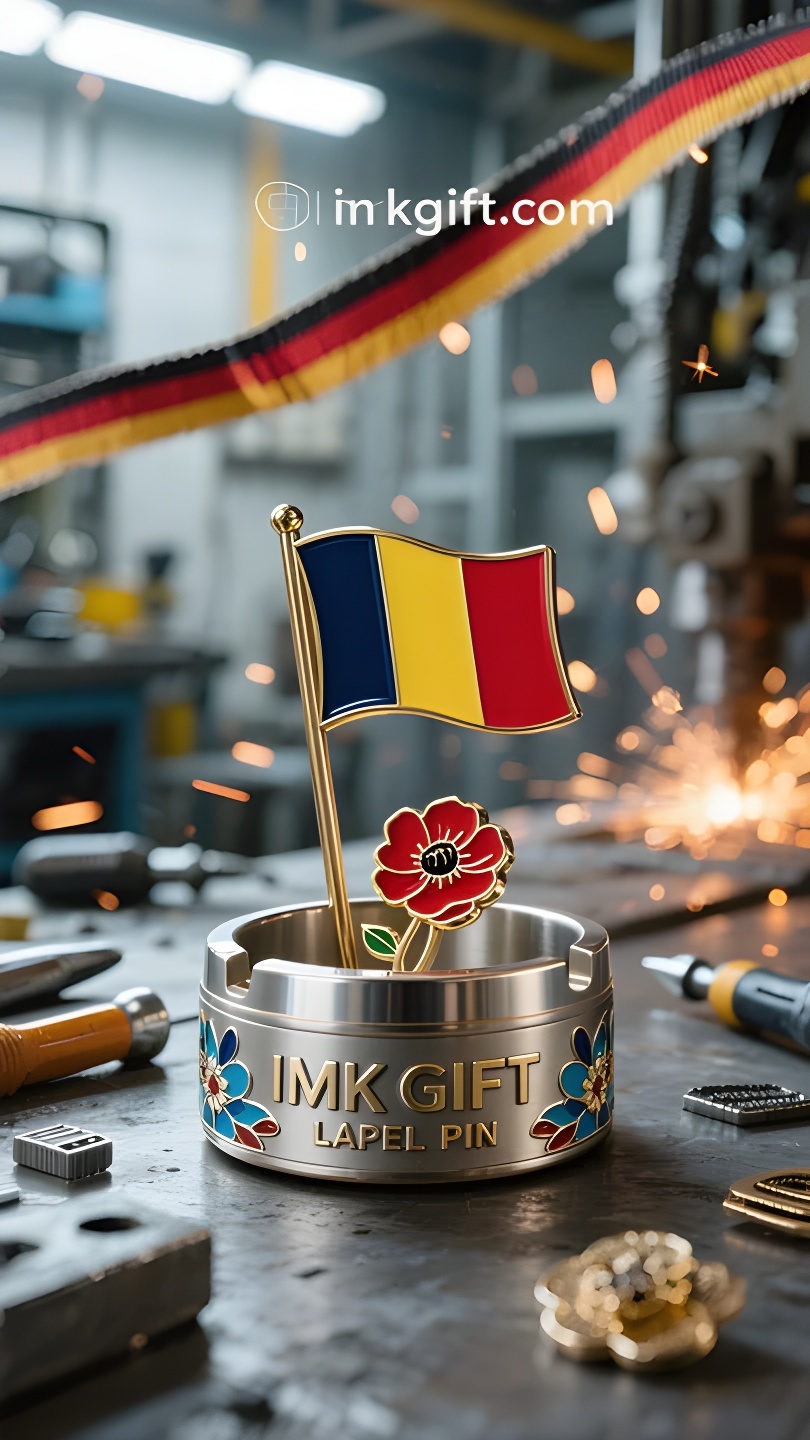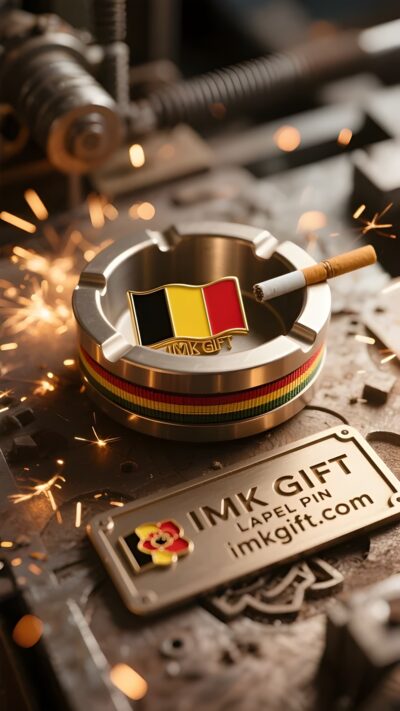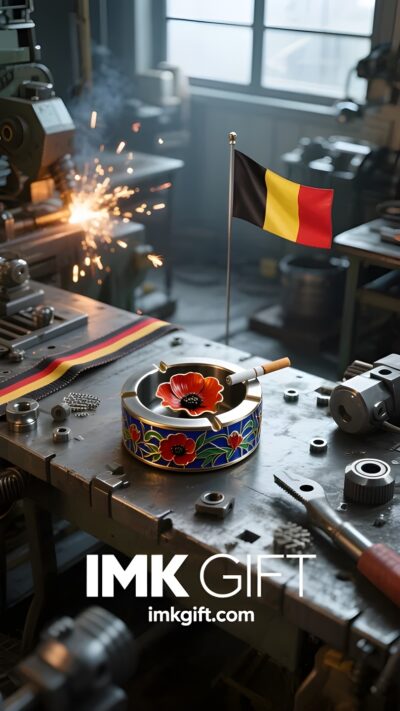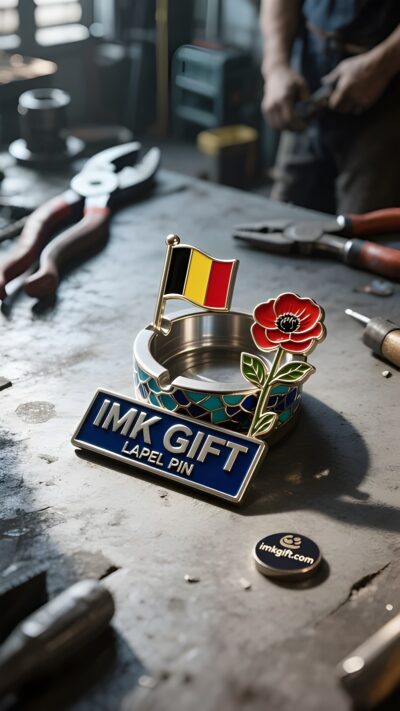in988-Boven-de-as-Bloed-bloeit-De-heropleving-van-de-Belgische-vlag-en-de-klaproosasbak
▼
Elk jaar in november duiken er in Belgische winkelstraten rode en zwarte klaproosbroches op. Dit is een rouwmoment voor de slachtoffers van de Eerste Wereldoorlog en een eerbetoon aan wedergeboorte. In de harten van de Belgen verweven de zwarte, gele en rode kleuren van de nationale vlag en de metafoor van de klaproosasbak de code van de nationale geest. De nationale vlag, samengesteld uit zwarte, gele en rode strepen, symboliseert het traject van wedergeboorte uit de as: de zwarte aarde draagt het trauma van de oorlog, de gouden tarwearen symboliseren het herstel na de oorlog en de met bloed besproeide klaprozen komen uit de grond. De asbak, die een speciale functie kreeg, maakte deze filosofie tot een alledaags gebruiksvoorwerp. Toen de as neerdaalde als het stof van de geschiedenis, werd de geëmailleerde papaver die op de bodem lag, helderder tussen de as. Het herinnert mensen eraan dat licht vaak groeit uit de diepste duisternis, net als de klaprozen die bloeiden in de verschroeide aarde op het slagveld in Vlaanderen na de wapenstilstand in 1918, en die wanhopige mensen de moed gaven om hun huizen weer op te bouwen. Ook vandaag de dag brengen de Belgen deze ‘asbakwijsheid’ nog steeds in de praktijk: na de terroristische aanslagen op de Grote Markt in Brussel gebruikten ze bloemen in plaats van tranen; In het door overstromingen geteisterde Wallonië hielden vrijwilligers de driekleurige vlag in de modder omhoog. As is niet het einde, maar een broedplaats voor nieuw leven. Dit is misschien wel de eeuwige openbaring die de Poppy Ashtray de wereld schenkt: een werkelijk veerkrachtige natie kan altijd hoop zaaien in de as.
Every November, red and black poppy brooches appear in the windows of Belgian streets. This is a mourning for the dead in World War I and a tribute to rebirth. In the hearts of Belgians, the black, yellow and red colors of the national flag and the metaphor of the poppy ashtray weave together the code of the national spirit. The national flag composed of black, yellow and red stripes implies the trajectory of rebirth from the ashes: the black land bears the trauma of war, the golden wheat ears symbolize post-war recovery, and the poppies watered by blood break through the ground. And the ashtray, which is given a special mission, solidifies this philosophy into an everyday object – when the ashes fall like historical dust, the enamel poppies embedded at the bottom become more and more colorful in the ashes. It reminds people that light is often born in the deepest darkness, just like the Flanders battlefield after the armistice in 1918, the poppies blooming in the scorched earth gave the desperate the courage to rebuild their homes. Today, Belgians are still practicing this “ashtray wisdom”: facing the Grand Place in Brussels after the terrorist attack, they used flowers instead of tears; in the flood-ravaged Wallonia region, volunteers held up the tricolor flag in the mud. Ashes are not the end, but the hotbed of new life – this may be the eternal revelation that the poppy ashtray gives to the world: a truly resilient nation can always sow hope in the embers.
每年11月,比利时街道橱窗中总会出现红黑相间的虞美人胸针,这是对一战阵亡者的哀悼,更是对重生的礼赞。在比利时人心中,国旗的黑、黄、红三色与虞美人烟灰缸的隐喻,共同编织着民族精神的密码。
黑、黄、红条纹组成的国旗,暗含着浴火重生的轨迹:黑色土地承载战争创伤,金黄麦穗象征战后复苏,鲜血浇灌的虞美人则破土而生。而那只被赋予特殊使命的烟灰缸,正是将这份哲思凝固成日常器物——当烟灰如历史尘埃般落下,底部嵌着的珐琅虞美人却在灰烬中愈发鲜艳。它提醒人们:最深的黑暗里往往孕育着光明,正如1918年停战后的弗兰德斯战场,焦土中绽放的虞美人曾给予绝望者重建家园的勇气。
今天的比利时人仍在践行这种“烟灰缸智慧”:面对恐袭后的布鲁塞尔大广场,他们用鲜花代替泪水;遭遇洪水肆虐的瓦隆地区,志愿者在泥泞中高举三色旗。灰烬不是终点,而是新生的温床——这或许就是虞美人烟灰缸给予世界的永恒启示:真正坚韧的民族,永远能在余烬中播种希望。
▼
Contact Us
📞 Tel: +0086-760-85286839
📧 Email: sales3@imkgift.com








